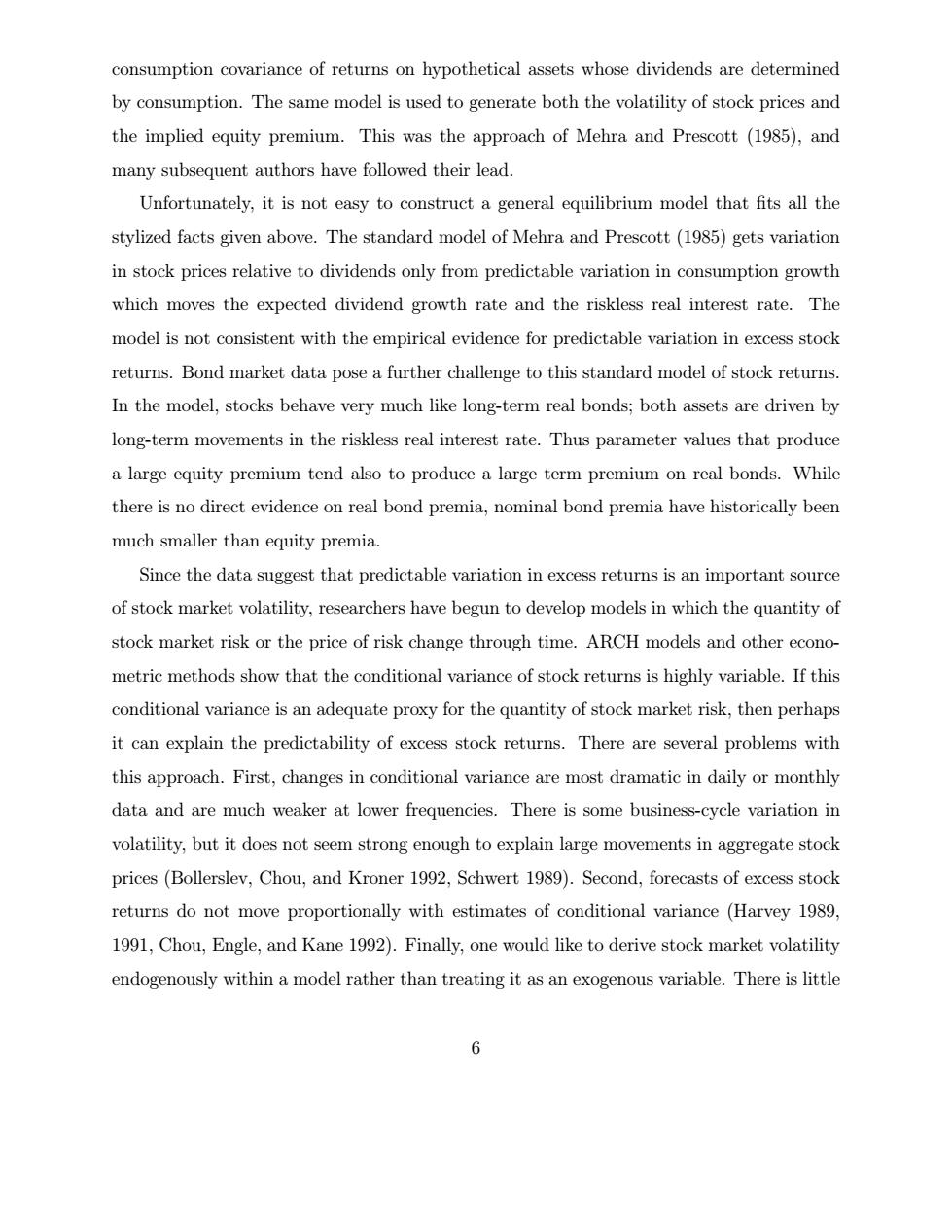正在加载图片...

consumption covariance of returns on hypothetical assets whose dividends are determined by consumption.The same model is used to generate both the volatility of stock prices and the implied equity premium.This was the approach of Mehra and Prescott (1985),and many subsequent authors have followed their lead. Unfortunately,it is not easy to construct a general equilibrium model that fits all the stylized facts given above.The standard model of Mehra and Prescott (1985)gets variation in stock prices relative to dividends only from predictable variation in consumption growth which moves the expected dividend growth rate and the riskless real interest rate.The model is not consistent with the empirical evidence for predictable variation in excess stock returns.Bond market data pose a further challenge to this standard model of stock returns. In the model,stocks behave very much like long-term real bonds;both assets are driven by long-term movements in the riskless real interest rate.Thus parameter values that produce a large equity premium tend also to produce a large term premium on real bonds.While there is no direct evidence on real bond premia,nominal bond premia have historically been much smaller than equity premia. Since the data suggest that predictable variation in excess returns is an important source of stock market volatility,researchers have begun to develop models in which the quantity of stock market risk or the price of risk change through time.ARCH models and other econo- metric methods show that the conditional variance of stock returns is highly variable.If this conditional variance is an adequate proxy for the quantity of stock market risk,then perhaps it can explain the predictability of excess stock returns.There are several problems with this approach.First,changes in conditional variance are most dramatic in daily or monthly data and are much weaker at lower frequencies.There is some business-cycle variation in volatility,but it does not seem strong enough to explain large movements in aggregate stock prices (Bollerslev,Chou,and Kroner 1992,Schwert 1989).Second,forecasts of excess stock returns do not move proportionally with estimates of conditional variance(Harvey 1989, 1991,Chou,Engle,and Kane 1992).Finally,one would like to derive stock market volatility endogenously within a model rather than treating it as an exogenous variable.There is little 6
%
(
$
*
@
A148B#
$
!
#
%
$
%
*
@
A148B %
(
%
'
%
(
'
(
= (
%
(
-
#
(
(
%)
>
%)
(
%
$
%
G
#
$
"
%%
'
( (
#
%
$
( (
(
(
%
%
;0?
)
(
%
-
$
'
$
( (
(#
'
'
(
#
%
(
$
)
#
%
%
' %
%%
%
(
A=
# # F
11# "
141B "
#
'
(
A?
141# 11# # .%
# F
11B #
(
( (
%
%
'%
9����������������������������������������������������������������������������������������������������������������������������������������������������������������������������������������������������������������������������������������